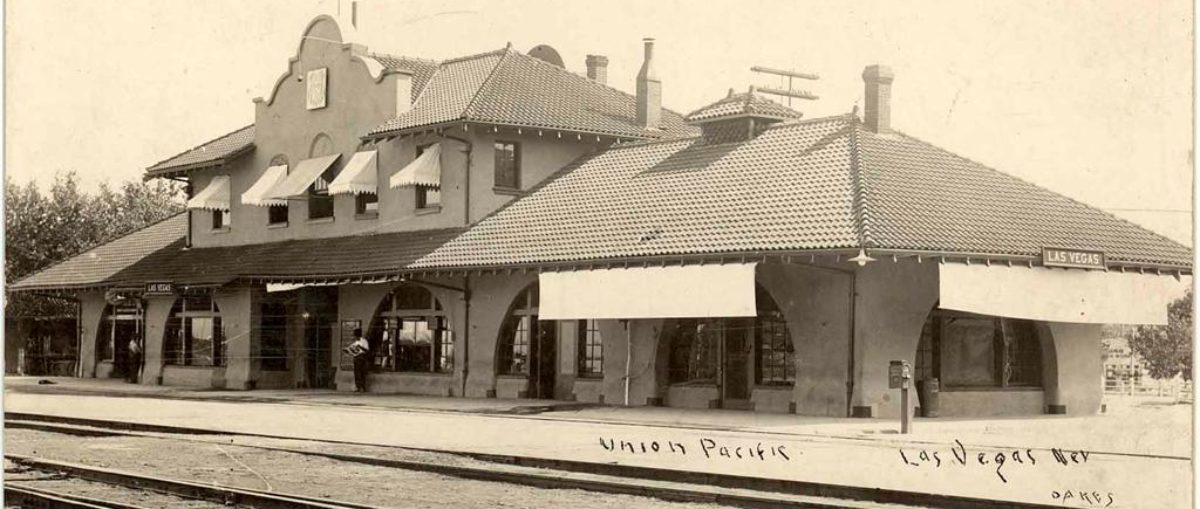Paiute Native Nevadans Images Published by Mrs. K. A. Raftice, Printed by Richard Behrendt, and Photographed by Walter X. Osborn
In 1907 post card publishers, printers, and those in between, along with pioneer photographers, recorded the early history of 20th century Nevada.
An important part of the visual recordings are photographs of the indigenous population of Nevada. Those photographs often turned into post cards and came with racist captions and stereotypical images.
The post cards were often produced and sold by photographers themselves, while other photographers sold their photographs to a local business, who found a company to print and color the images.
In the early part of the 20th century, German-based printing companies produced high-quality products, and with lower costs, Germany became the post card printing capital of the world.
Kate Raftice owned and operated a book, stationery, and gift store in the Arlington building in Carson City. Raftice also published and sold post cards.
Raftice, who used the credit line on the back of the post cards, “Mrs. K. A. Raftice,” used several printers to produce her cards.
Moreover, as a marketing tool, Raftice would also rubber-stamp her name over the credit line of printers.
This has caused confusion resulting in reports that Raftice was the photographer who took the image seen on the post card.
This report will focus on a limited series of color post cards Raftice published in 1909 using the Richard Behrendt Company of San Francisco, California. Behrendt.
Details of the images, as well as the photographer and the publishers of the post cards, are included in this overview.
There are two distinct types of post cards. The first group, “Real Photo,” cards are printed on photographic paper.
The second type of post cards are those produced using a printing press. The Raftice-Behrendt lithographic post cards were all printed in Germany.
In 1908, Behrendt, who created his post cards in his printing operation, also acted as the intermediary between retailers and a German printing company.
Behrendt’s name can be found on Nevada’s more than fifty post card views. The company likely produced as many as sixty cards related to the state.
Of the known fifty cards, 25 were published by Raftice.
Only six of the Nevada cards connected to Behrendt feature human beings.
This report will focus on just the five images published by Raftice. All five cards feature members of the “Piute” tribe in Nevada.
The sixth Behrendt view of an individual is that of the late Nevada Governor of Nevada, John Sparks.
Sparks died in office on May 22, 1908. The post card went on sale shortly after his death with the caption, “Last Photograph Taken of Governor Sparks.
Behrendt received the order for the Sparks card from another Carson City business, Abe Cohn’s Emporium, home of the famous Dat-So-La-Lee baskets. The Sparks post card has a Behrendt number of 675.
The five Raftice/Behrendt post cards include,
1346 “Piute Papoose, Carson City, Nevada.”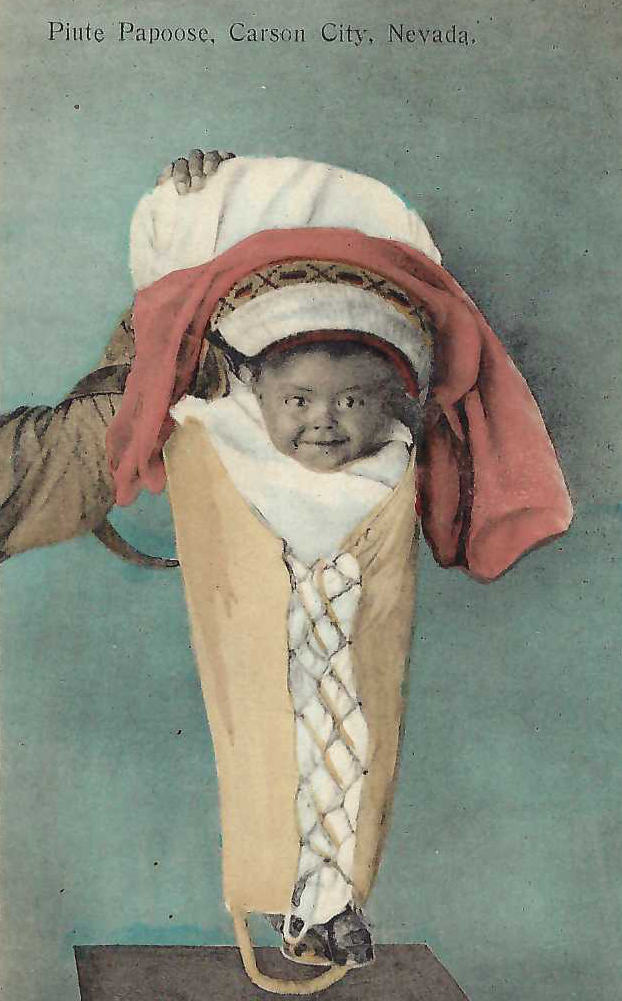
1347 “Piute Squaw and Papoose, Virginia City, Nevada.”
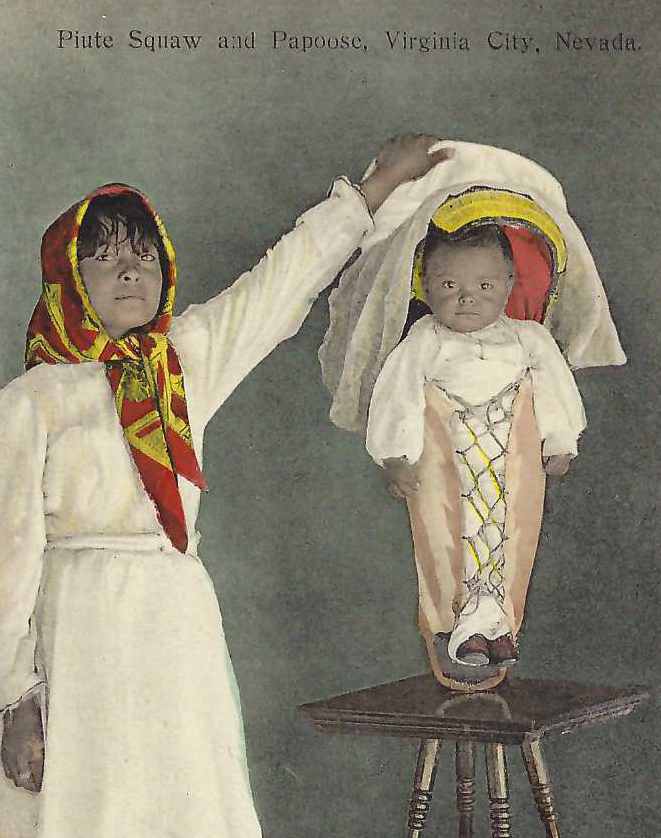
1350 “Piute Indians, Carson City, Nevada.”
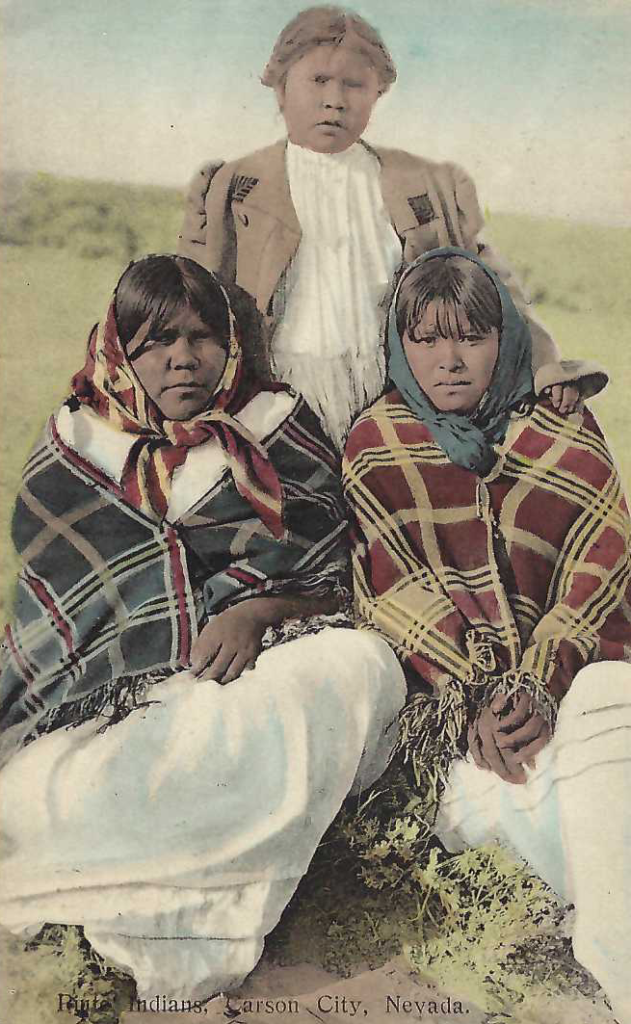
1352 “Old Indian woman Wdbuska Reservation, Nevada.”
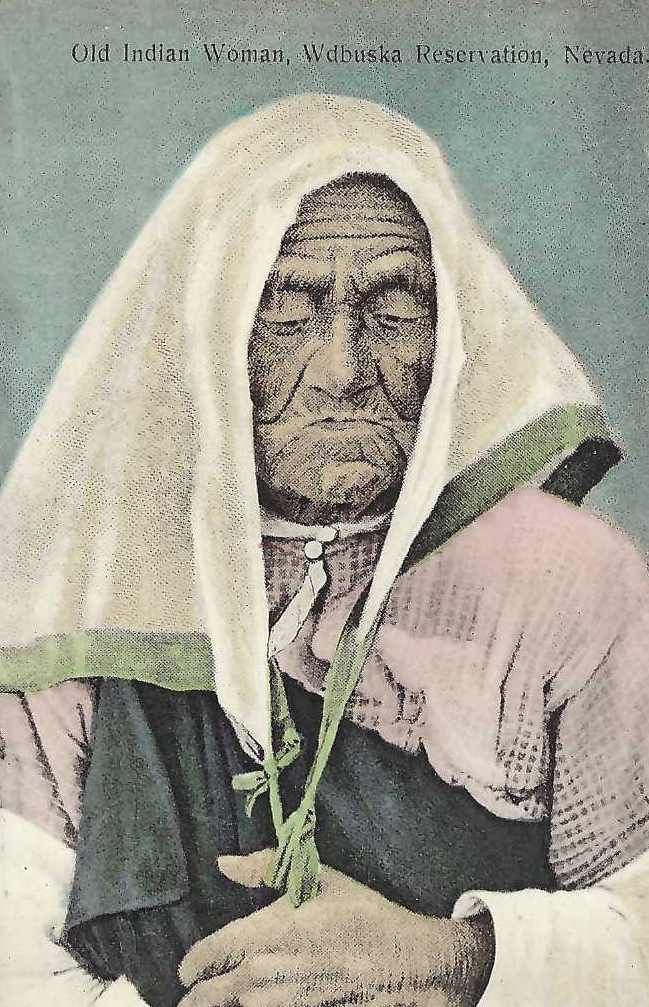
1357 “Indian George, Humboldt, Nevada.”
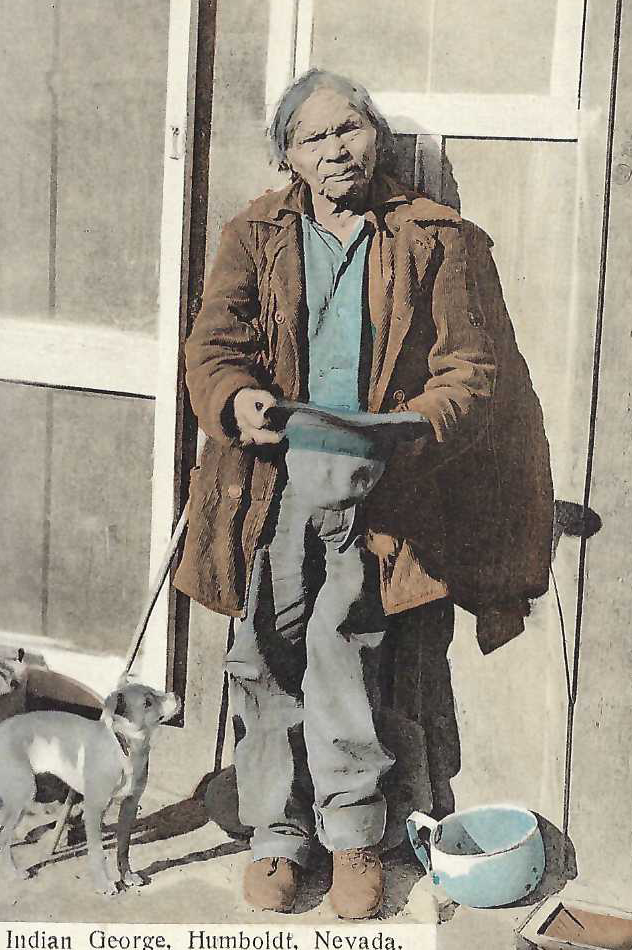
Credit line – who was the real “Publisher” of the post cards?
![]()
The credit line on the back of the printed cards says the series of post cards were were “Published” by Richard Behrendt.”
It was Mrs. Raftice who selected the images to be printed and hired Behrendt as the go-between her and the German printing company.
In this case Mrs. Raftice was the actual publisher and Behrendt acted as the intermediary
Subjects of the images.
Beyond the name “Indian Mike” on one post cards the identity of the people in the post cards has yet to be determiend.
In addtion, it is likely there was more than one “Indian George.” References are found in Nevada from 1875 through the 1920s in different parts of the state to an “Indian Mike.”
More work needs to be done to identify the human being on the post cards. in addtion to the location of the photographs and the time period there are clues that could lead to an identifcaiton of the people on the post cards.
For example, the “Old Woman” at Wabuska may have been known throughout the community and possibly the subject of other photographs.
The photographer.
It is likely that Walter X. Osborn, a photographer who worked in Nevada ca. 1907-to 1910, spent most of his life outside the state as a mining engineer, from Arizona to the Philippines.
While he was already using X as a middle name, Osborn had the X officially added to his legal name in 1922.
He came to the United States in 1897 from England, where he was born.
Photographer Walter X. Osborn published his post cards using the credit line “Osborn Photo.”
Many images of Nevada and non-Nevada views have a different Osborn’s credit line on the back of post cards when he worked in Rawhide, Nevada.

Apparnetly planning to work out of Rawhide for a lenghtly period of time, Osborn had is name and the location of Rawhide printed on the back of the undevelopped real photograph paper. When he left Rawhide he continued to print new photographs on the photo paper with the Rawhide address, confusing and often labeling non Nevada and non Rawhide views as images of Rawhide.
Osborn was in the Philippines at the start of World War 11, was sent to a Japanese prisoner of war camp, and “settled down in the Philippines and established what he called a “productive chemical farm.”[i] Osborn listed his last occupation as “Chemist.”
According to the death certificate, he died of “senility” at 86 in the Philippines. [ii]
While more research needs to be done, Osborn was deeply involved in the occult, which possibly explains the X in his name.
The location.
Of the seven post cards in this report, three views list the location in the card’s caption. The remaining four views of the woman and child list different locations for the same photographs, Carson City and Virginia City.
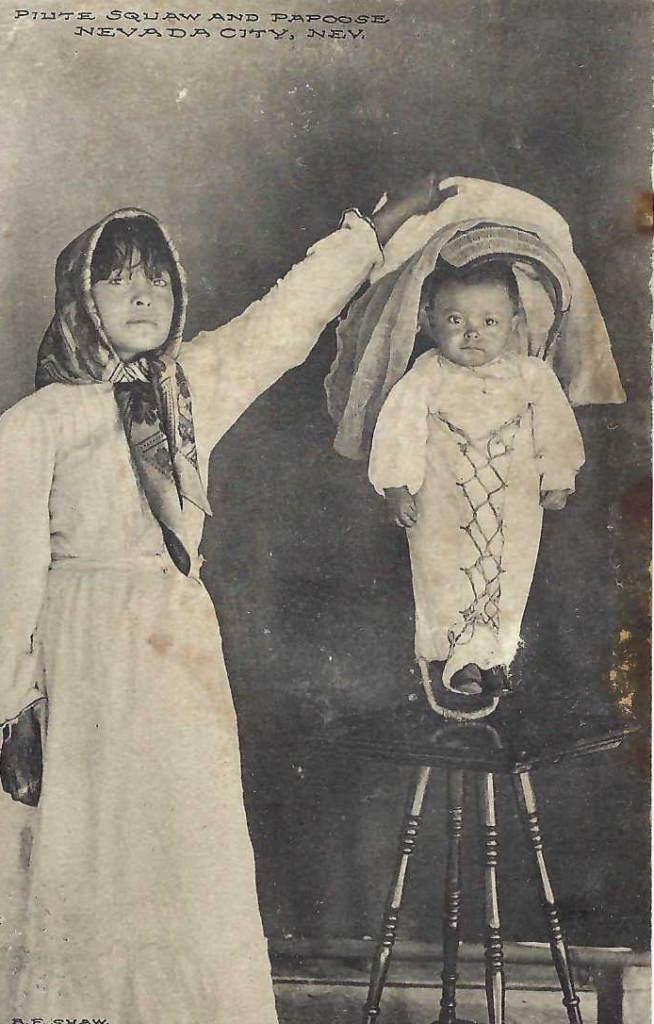
The post card listing the photograph location as “Nevada City” is a mistake. Based only on his credit line on the real photo post cards, we assume Osborn took the post cards of the woman and child and that his studio was in Carson City.
The time frame.
The seven photographs used for these post cards were taken before 1909 and likely in late 1907 or 1908.
Publishers
Nevada Photo Service.
Two companies were operating under the name Nevada Photo Service in the 1900s. The first one was based in Virginia City, Nevada, and was in operation at the beginning of 1900 and printed copies of the Osborn photographs. Little is currently available about the first Nevada Photo Service. The company produced real photo post cards of Carson City, Reno, Virginia City, Lovelock, and other communities along the western edge of central Nevada.
The four triangles AZO in the stamp box on the Nevada Photo Service psot cards the cards were likely printed from 1904 to 1918.
A second company, the Nevada Photo Service, opened in Reno in 1926 and is not connected to the first Nevada Photo Service and is only mentioned in this report as it has the same name.
Verner Tobler & Company
No information has been uncovered regarding the “Piute and Papoose –Carson City, Nevada” post card “Pub. By Verner Tobler & Co., College Point, N.Y.”
Richard Behrendt
Starting in 1908, Behrendt’s name is found on the backs of more than fifty post cards with views of Nevada. It is likely his San Francisco, the California-based company, likely published as many as sixty 60 Nevada views over a two year
Behrendt was born in Germany in 1854, arriving in the United States when he was sixteen years old. Six years later, he arrived in San Francisco. Behrendt’s first known post cards were published in 1905 in San Francisco and the bay area. After covering much of central and northern California, Behrendt sales were made to the north, Oregon, and Washington and east to Nevada. In early February of 1909, at the age of 54, Behrendt died. His son and brother continued the business, with the last Nevada post card order coming less than a year after his death. [iii]
Behrendt’s obituary noted that in the thirty-three years he had been a resident of San Francisco, he “built up a business which of late years has grown to large proportions.” [iv]
While there were several spellings of Paiute in the early 1900’s Piute was the generally accepted spelling. However, that changed in the mid-20th century to Paiute.
There is one word misspelled in the caption; “Old Indian Woman. Wdbuska Reservation, Nevada.” Wabuska is spelled with an “a,” not a “d.”
Checklist with notes.
“Piute Papoose, Carson City, Nevada.”
Credit line on the left edge of the back of post card; “1346 Published by Richard Behrendt, San Francisco, Cal for Mrs. R.A. Raftice, Arlington Block, Carson City, Nevada, Printed In Germany.
The colored lithograph vertical Image shows a person’s arm and hand holding the top of a cradleboard with a smiling baby.
Based on other photographs, the hand is that of a woman, likely the child’s mother, but identified only as a “Piute Squaw.”
The baby’s shining shoes are visible, sticking out the bottom of the cradleboard.
The message on the printed post card, September 30, 1912, Carson City to a friend in Ohio, “I thot you would like a picture of a real little live papoose there a lots of them on the streets here in Carson.”
An untitled real photo post card using the exact photograph supplied to Behrendt by Raftice has a credit line on the back; W. X. OSBORN, PHOTOGRAPHER, WITH G. & K. DRUG COMPANY, RAWHIDE, NEV.”
The real photo post card in the collection is postmarked Virginia City, Nevada, on July 5, 1909. Short unsigned message to a friend in Cripple Creek, Colorado, “Hello: – It is pretty chilly here for this time of year. Lots of Indians around here. Goodbye”
Caption; “PIUTE PAPOOSE VIRGINIA CITY NEV OSBORN PHOTO 193”
This is a real photo post cards showing a different view of the same baby seen in post card one, with the same person holding the cradleboard upright on a table.
While the baby is not smiling, the child appears interested in what is happening in the photographer’s studio.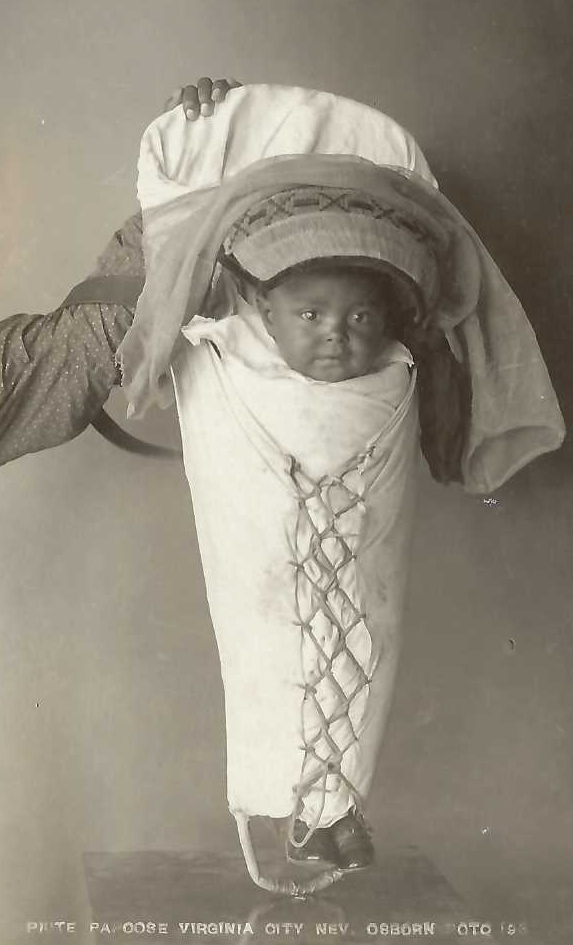
The caption provides the photographer’s name, “Osborn,” as in Walter X Osborn.
This photograph was not one Raftice sent to Behrendt. However, two different publishers of real photo post cards published the image.
The caption on the post card moves the “Papoose” from Carson City to Virginia City.
In the first version, the credit line is part of the caption on the face of the post card, “OSBORN PHOTO.” No credit line on the back.

The second version of the same photograph has the same caption and credit line for “OSBORN POTO” on the face of the post card. However, on the left edge, on the back, is an additional credit line, “NEVADA PHOTO SERVICE, VIRGINIA CITY, NEVADA.”
Post card without a caption
This real photo post card shows the woman holding the top of the cradleboard with the baby. The cradleboard is standing on top of a table.
This post card shows the arms of the child outside and in front of the cradleboard.
The photograph used for this post card also clearly shows both of the baby’s shoes.
No credit line is found on the post card.
Caption: “PIUTE SQUAW & PAPOOSE VIRGINIA CITY NEV. 128”
The “NEVADA PHOTO COMPANY VIRGINIA CITY, NEVADA” credit line is found on the left side of the back of the post card.
The third image of the photography session shows the woman in the same position holding the top of the cradleboard. In this view, the baby’s arms are still out of the cradleboard but are off to the side.
A second real photo post card version of this photograph has no caption on the face of the card.
On the back, along the left edge, is “OSBORN, PHOTOGRAPHER, WITH G. & K. DRUG CO., RAWHIDE, NEV.”
A known postmark on this version of the real photo post card is June 10, 1909.
First printed version.
Raftice selected this image to be printed by Behrendt to create “Piute Squaw and Papoose, Virginia City, Nevada.”
The card has a Behrendt series number 1347.
Behrendt’s artists added a limited amount of color to the image, leaving the clothes of the woman and child white. The artist spends time adding color details to the woman’s scarf and limits the exterior of the cradleboard to a light brown leather color.
Credit line on the left edge of the back of post card; “1347 Published by Richard Behrendt, San Francisco, Cal. for Mrs. R.A. Raftice, Arlington Block, Carson City, Nevada, Printed In Germany.”
A second printed version of this photograph was sent to the Albertype post card company of New York first by B. F. Shaw of Virginia City and a second time when he sold to the Pioneer Drug Store also of Virginia City.
Later, Shaw and the drug store often used Albertype to print post cards.
Despite two separate orders at different times and with different backs, there is a problem with this black and white postcard’s caption.
While other post card captions place the woman and child in different locations, Carson City and Virginia City, the Albertype mistakenly says the “PIUTE SQUAW AND PAPOOSE” are from “NEVADA CITY, NEV.” There is no Nevada City, Nevada; there is a Nevada City in northern California.
A credit line for the “PIONEER DRUG STORE” is found at the bottom of the face of the vertical post card.
A third printed version of this photograph was, according to the credit line on the left edge of the back of the card; “Pub. By Verner Tobler & Co., College Point, N.Y.”
This divided back, black and white post card has the caption; ‘PIUTE AND PAPOOSE – CARSON CITY, NEVADA.” is printed in Black and white.
Caption “PIUTE INDIANS, CARSON CITY, NEVADA.”
The image shows three women, two sitting and one standing between the two. All three women have a serious look. Possibly because the photograph was taken outside and it is cold. The two seated women are wearing identical shawls. All three, according to the color selected by Raftice or the Behrendt artist, are wearing white dresses.
This is another photograph Raftice sent to Behrendt to produce as a post card. Like the other Raftice post cards in this series, the credit line on the back reads, “1350 Published by Richard Behrendt, San Francisco, Cal. For Mrs. R. A. Raftice, Arlington Block, Carson City, Nevada, Printed in Germany.”
The quality of the Behrendt artist and printing provides what appears to be an accurate sense of the moment.
A real photo version of the three women, according to the caption, places them in Winnemucca.
The caption on the face of the post card reads, ‘INDIANS AT WINNEMUCCA, NEV.”
There is no credit line on the post card. The font style is different from that used by both Osborn and Nevada Photo Service.
The four triangles AZO back indicate when the card was likely printed, 1904 to 1918.
“Old Indian Woman. Wdbuska Reservation, Nevada.”
This is a Behrendt post card, part of the Raftice series, 1352.
Both the caption and the quality of the image are not of the same standard as the other views in this series.
The community of Wabuska, not Wdbuska, is located near Yerington, in Lyon County.
Details of the Northern Paiutes can be found at
The quality of the image is different from the others in this Raftice series printed by Behrendt. The post card image was reproduced from another printed post card rather than an actual photograph. Moreover, while the Behrendt artists use the color selection on the other views in this series, only two colors, green, light and dark, and pink are found in this view.

An interesting view. The image shows the upper part of the woman. Her eyes are closed, and she has a scarf over her head and is holding it down with her thumb.
There is likely a real photo and a different printed view of this woman.
Credit line on the left edge of the back of post card; “1352 Published by Richard Behrendt, San Francisco, Cal. for Mrs. R.A. Raftice, Arlington Block, Carson City, Nevada, Printed In Germany.”
Caption “INDIAN GEORGE, 105 YEARS OLD, HUMBOLDT, NEVADA. 102 ”
The image shows “George” standing next to a wooden building with a small dog. With his hat in his hands in front of him, “George” is wearing a heaving corduroy coat. What appears to be a cane is hanging from the right coat pocket.
Mrs. K. A. Raftice
The post cards Raftice published and some post cards she purchased from other retail outlets in most cases carried the credit line “Mrs. R. A. Raftice.”
Mrs. Raftice was Kate Murphy Raftice. In 1902 she married Robert Raftice, a member of the Nevada Assembly from Eureka, Nevada. The two lived in Eureka until 1906, when Mrs. Raftice moved to Carson City and opened a stationery store. Mr. Raftice continued to live in Eureka. Mrs. Raftice successfully operated her store in Carson City for nearly twenty years. During this time, she would become the largest retailer of post cards in the state capitol.
The post cards published by Mrs. K. A. Raftice are part of an overall image of the indigenous population of Nevada in the early years of the 20th century.
From the images on the post cards to the captions and the messages written by the senders, overt to less than subtle racist commentary is found regarding the state’s indigenous population. Mrs. Raftice’s post cards are less offensive than most.
[i] http://richardgilbert.me/reading-my-fathers-book-at-last/
[ii] “Report of the Death of an American Citizens,” Walter X. Osborn, American Embassy, 1960.
[iii] “Obituary,” February 27, 1909, The American Stationer, page 25.
[iv] “Obituary,” February 27, 1909, The American Stationer, page 25.
